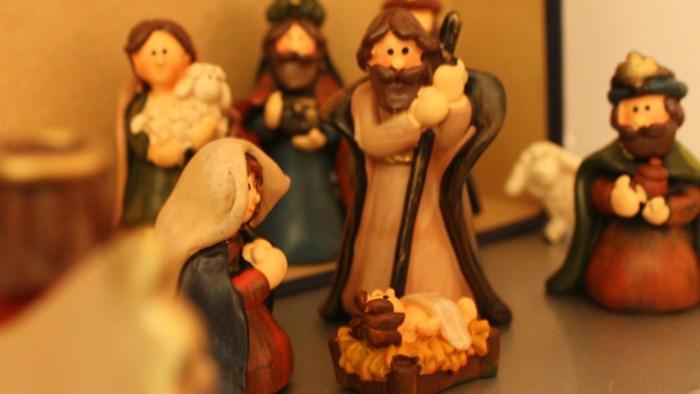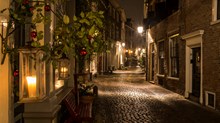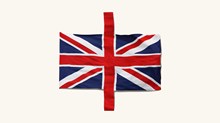
When my parents were getting ready to celebrate Christmas in their new home in Denver after moving from Seattle several years ago, they tried to make a list of all our family's Christmas traditions. They wanted to make sure Christmas, even though it was in a new place, still felt exactly like Christmas. So my whole family sat down to share Christmas memories and discuss customs we carried out year after year, knowingly and unknowingly. It took a long time, especially since many of our traditions were detailed: how many presents to open on Christmas Eve (one), what to eat on Christmas morning (scrambled eggs, bacon, and Pillsbury orange rolls), etc.
It was a fascinating experience, because we all had "traditions" that were obvious to us, but which other family members had never even considered. Even more surprising, my brothers and I had considered some practices "traditions" when in reality we had only done them once or twice.
As I've been reading about Christmas traditions this week, I've wondered how many of them have such dubious backgrounds. I can't recount all the histories here, but several books available at your library have already done so. The stories are fascinating. Christmas cards began instead as New Year's greetings. The Christmas tree was associated with the Edenic Tree of Knowledge and decorated with apples—forbidden fruit. Holly was thought to be the tree from which the cross was made. Hanging mistletoe comes from an old Scandinavian military custom: enemies encountering each other under the plant laid down their arms in truce until the next day.
What has also surprised me is how many times Francis of Assisi (c. 1181-1226) has come up in these traditions. Apparently, Francis's friars (and perhaps Francis himself) were the first to write simple, happy, Gospel-based songs. These were much lighter and festive than hymns and are considered by historians as the first carols.
Francis also is the first person on record to create a Christmas nativity scene. On Christmas Eve 1223, in order to "Set before our bodily eyes … how he [Jesus] lay in a manger," Francis and his companions worshiped in a cave near Greccio, Italy, surrounded by the traditional oxen, sheep, and donkeys.
An early Francis biographer recounted, "Neighborhood people prepared with joy according to their capacity, bringing candles and torches to illumine the night that has been the light of the world through its star. Finally, the saint of God arrived and saw it and was glad. The manger was ready, hay was spread, and the ox and ass led in.
"Thus, simplicity was honored, poverty exalted, humility praised. Greccio was made a new Bethlehem. The night became as day to the joy of men and animals. The people were happy at this great mystery. the forest echoed with the voices of the congregation; the rocks cried out in jubilation. The friars sang their debt of praise to God, and the night echoed with their hymns. The saint of God stood near the manger, overwhelmed with love and swelling with happiness."
* Christian History issue 42: Francis of Assisi, is available in the CH store.

Support Our Work
Subscribe to CT for less than $4.25/month




























